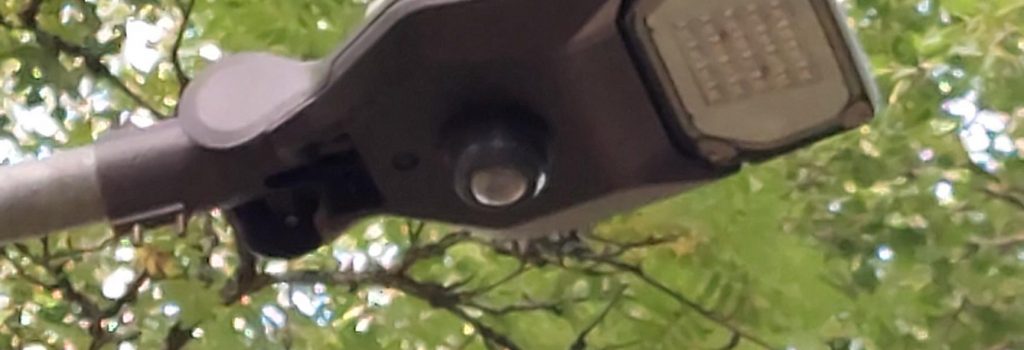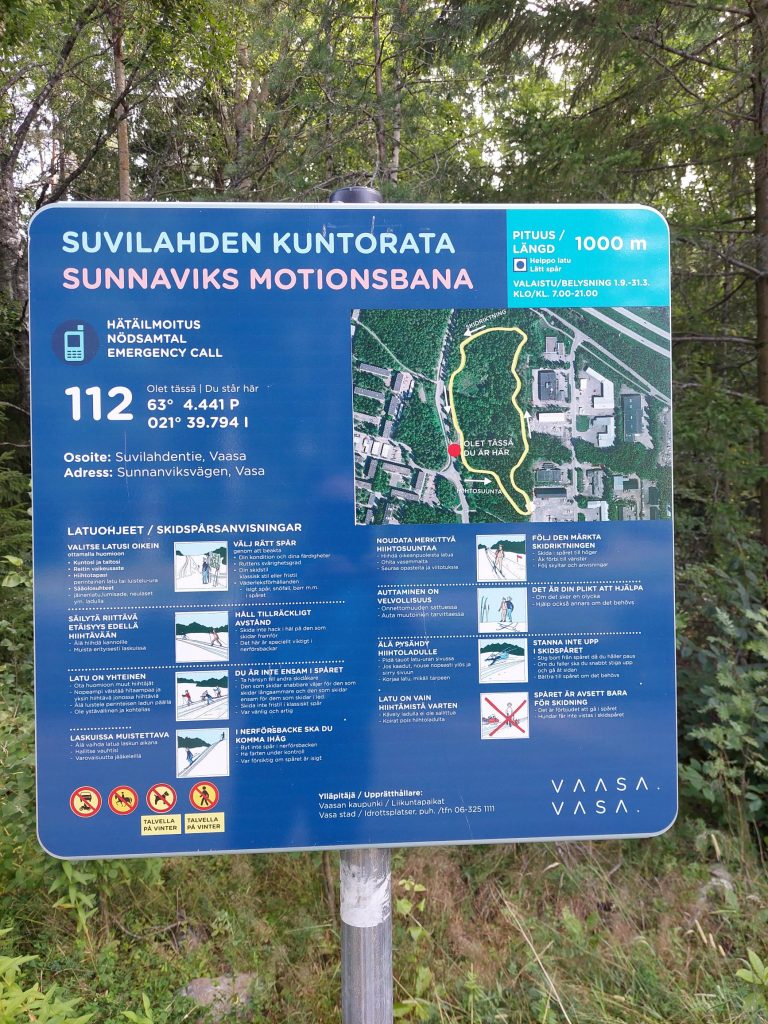
The lighting renovation of the fitness tracks in the city of Vaasa minimizes maintenance costs and drops energy consumption to less than a fifth of the previous level.
The price of electricity has increased many times in recent years and soon we can already talk about an energy crisis. The lighting of fitness tracks in several municipalities is also in dire need of renovation. In Vaasa, this was the case on nine fitness tracks with a total of 767 lights. It was also alarming that the annual maintenance costs of the lights were already higher than their energy consumption, which was also already high.

Starting point
The old lamps were high-power, uneconomical and maintenance-requiring mercury and high-pressure sodium lamps. The lighting was controlled by clock control and the lights were on from approx. 7 am to 9 pm and always at full power, whether there were people exercising on the fitness tracks or not.
Initial situation in numbers (annually)
- The average burning time of the lamps 1079 h
- Energy consumption 11.172€
- The maintenance costs of the lamps €15,500
Energy saving calculations made by Vaasa 2020 (on an annual basis)
The power of the lamp | Dimming | Energy consumption | Savings |
29W | 100% | 3444 € | 7728 € |
29W | 10% dimmed 50% burn time | 1892 € | 9280 € |
29W | 10% dimmed 66% burn time | 1377 € | 9795 € |
18W | 100% | 2004 € | 9168 € |
The calculated price of electricity is €0.13/kWh + energy transfer. The average burning time of the lamps is 1079 h.
Smart lighting
Vaasa is an innovative smart city, and instead of just changing the lamps, they also wanted intelligence and controllability for the lighting. C2 SmartLumo Z controllers were installed on top of the luminaires and some of the luminaires were also equipped with a zhaga motion detector that can be attached to the underside of the lamp. The lighting networks of the fitness tracks are also energized during the day, it enables monitoring of activity in the area with the help of motion detectors, thus providing indicative information on the number of visitors to the fitness tracks. In addition, Vaasa acquired a snow sensor for the area in addition to the snow sensor already purchased for adjusting the street lighting, because the weather conditions on the coast change quickly. With the help of snow sensors, the lighting is enhanced when the ground is black and dimmed when snow falls on the ground, because snow reflects light effectively.
Functionalities improve safety, such as the adjustment of burning time and lighting intensity. The benefits, such as saving energy and reducing light pollution, are city-specific: smart lighting at sports venues improves the city's image when the focus is on the safety and comfort of those who exercise.
Harri Heino, electrical technician responsible for street lights in the city of Vaasa, is satisfied with the purchase. "We did the savings calculations a couple of years ago when the price of electricity was lower, but now the energy savings are a significantly larger amount. These days attention must also be paid to light pollution. When the lighting is controlled with motion detection as needed and the lights are not switched off but dimmed at night, we offer the municipal residents a better service and also the opportunity for shift workers, for example, to move later. Smart lighting is also an image issue for the city." says Heino.
The intelligent control of the lighting was provided by C2 SmartLight Oy. "It's great for us to be involved in this type of project, where with the help of the technology we've developed, energy consumption and maintenance costs are reduced and light pollution is reduced. We offer municipalities and cities lighting renovation services from design to installation, and smart lighting can also be purchased from us by renting, in which case the purchase does not cause depreciation in the financial statements and the monthly rent is often lower than previously paid for electricity and lighting maintenance." Deputy CEO Petri Laitinen from C2 SmartLight Oy says.
True life cycle costs
When calculating savings, it is important to think about what is counted as savings? Should only the saved energy be calculated or also the savings from maintenance costs, in which case the life cycle costs are more genuine. Based on the calculations, the purchase will pay for itself in an average of five or ten years and will then bring direct savings to the city. Few acquisitions are so profitable.
When the lighting is adjustable according to the level of use and remotely controlled, in addition to clear euro savings, benefits are also achieved that are not as easily measured in money but are very important for the fauna and flora, such as a reduction in light pollution. "Unnecessary energy is now used to light sports areas. We should think about whether it would be possible to dim the lights when artificial light is not needed and brighten them when the users arrive," sums up Laitinen.
If the intelligent control of the lighting seems to be a completely insurmountable cost at the purchase stage, it is worth at least equipping the lamps with zhaga connectors, which makes it easy to install the controls also afterwards.